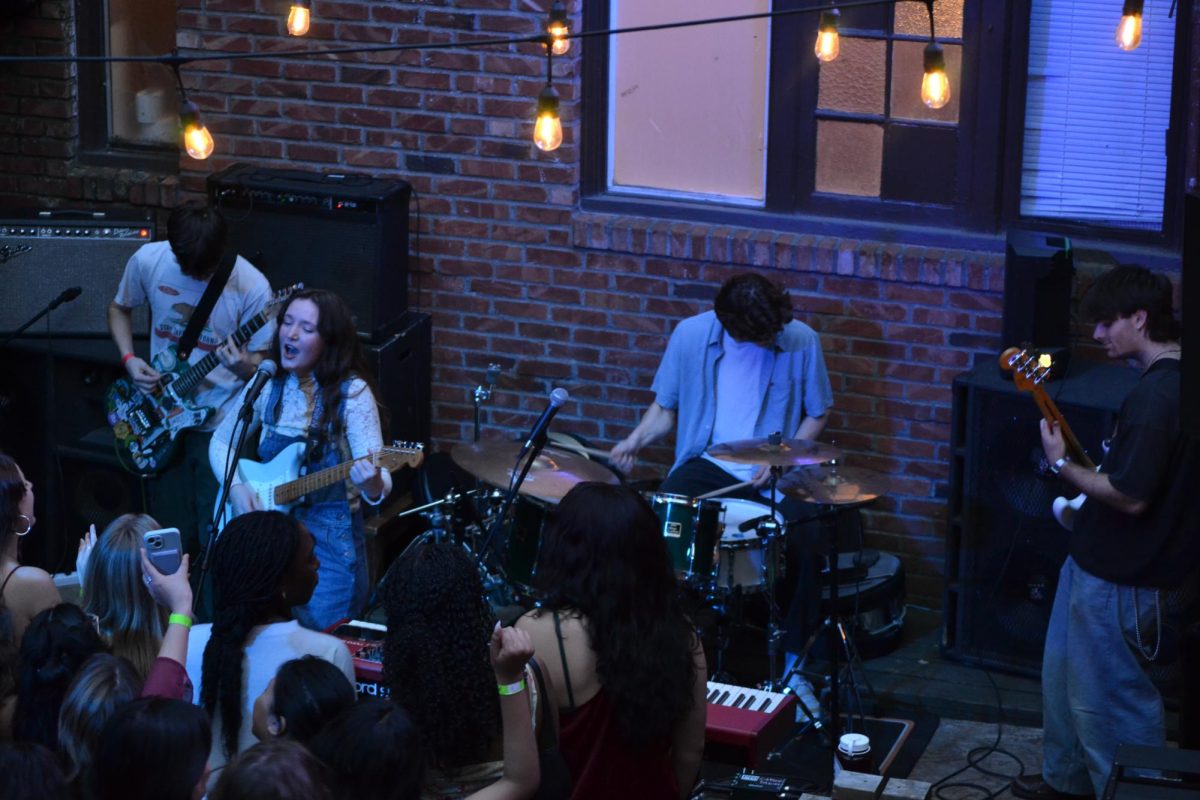Surrounded by instruments, Dan Adams pointed at photos covering the back wall of Beegle Hall as he passionately explained the origins of various percussion instruments.
“[Music] is a great educational tool, but it also taps into the human spirit,” said Adams, who has been the director of percussion studies at Seattle Pacific University for 30 years.
“It’s a magical way for us to experience those emotions just through sound and how we combine sound to draw that out of us.”
Highlighting the deep relationship between history, culture and music, the Percussion and Jazz Ensemble Autumn Concert last Tuesday, Nov. 6, paired two types of musical expression and illustrated the shared significance of both: music as a powerful agent of storytelling.
Although there was not an explicitly advertised theme to the concert, according to both ensemble directors jazz and percussion belong to rich cultural histories that are essential to the music itself, as well as to how the music is taught.
The concert began with a bang as the Ethnic Drum Ensemble played a traditional song of the Northeastern Guinean Malinke tribe; hand-drumming and dancing with energy.
This type of music has been the means of communicating culture throughout generations in West Africa and, unlike the more classical genres of music that students are expected to learn, it is best taught aurally, rather than through notation.
Because of this, students are challenged to “live [the music] deeper,” according to Adams. That is, in order to understand and honor the history and culture, they must actively experience the music “from the very physical aspect of creating it.”
In this way, students begin to learn the unique stories of other cultures through the lens of, as Adams puts it, the “universal language” of music.
During the concert, however, the Percussion Ensemble also explored how music can help us remember our own history.
In an interpretation recounting the events and tragedy of D-Day, the ensemble played a haunting song entitled “Normandy Beach- 1944” as their finale.
As notes of “America the Beautiful” rang gravely throughout the piece, the musicians invited the audience to participate in the experience being created or, rather, the story being retold.
This is something that Jazz Ensemble director, Dan Kramlich, sees as a power of jazz as well.
Following the Percussion Ensemble, the Jazz Lab and Jazz Ensemble played a collection of pieces ranging from bebop to samba. While each song invoked a different emotion, all of them reflected the technical complexities and capacity for individual expression which unites all jazz.
Another element that unites jazz as a genre, as well as a distinctive culture and community, is its history.
“You can learn alot about american history through studying jazz history,” said Kramlich, who is the Instructor of Jazz History at SPU.
“A lot of the themes that keep repeating themselves in the history of the music are still happening today … [and by] being mindful that there are connections we can make to what’s going on in the world now, we can see the echoes of what’s happened in the past that makes us think about those things on a deeper level.”
Since jazz is one of the original expressions of African-American culture, it tells a story that was long ignored but is vital in forming the greater narrative of American history.
Music Technology student and saxophonist Owen Sweeny spoke on the importance of learning about the history when playing jazz.
“Just having the music in front of you doesn’t teach you what is behind it or whats trying to be conveyed.”
















































































